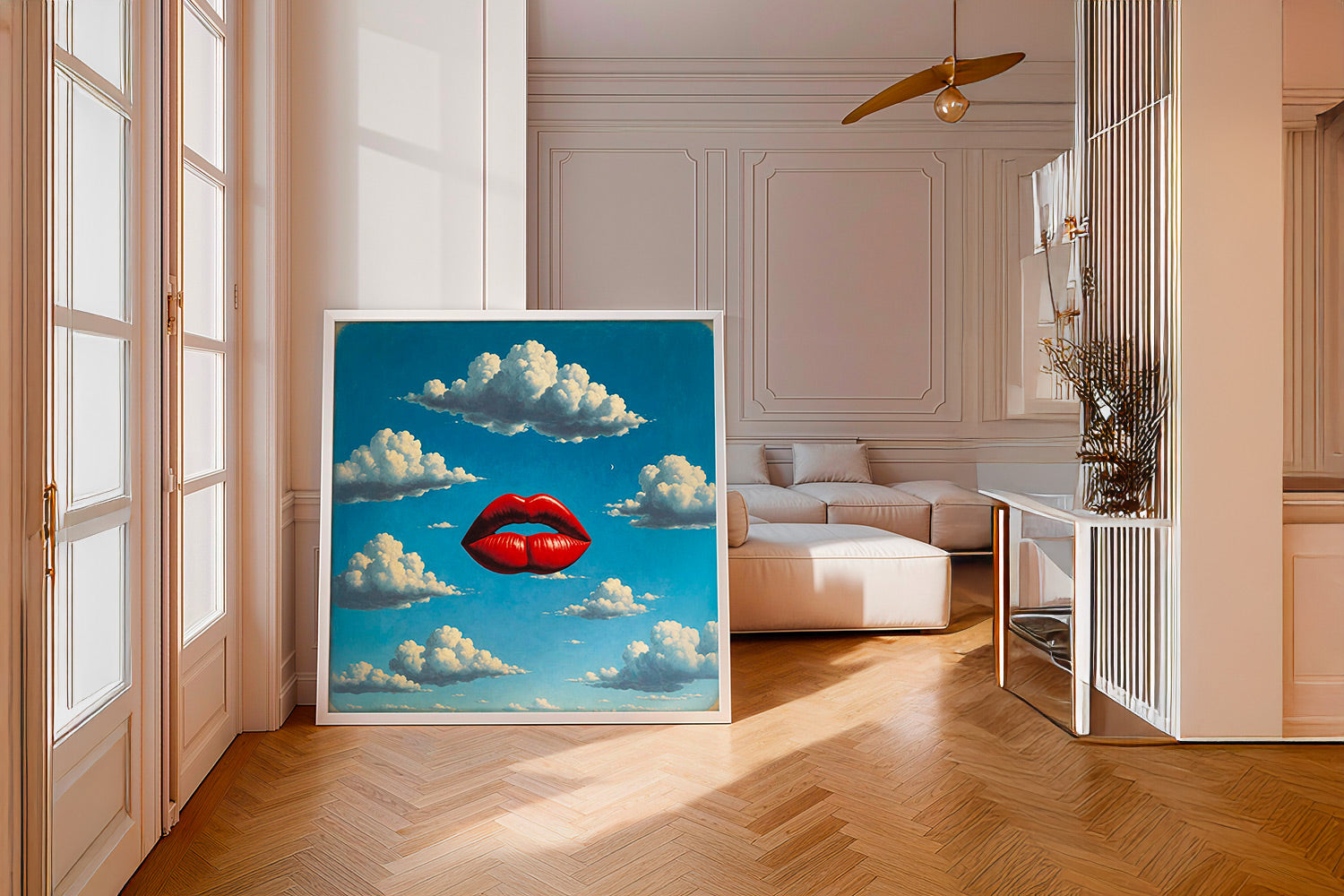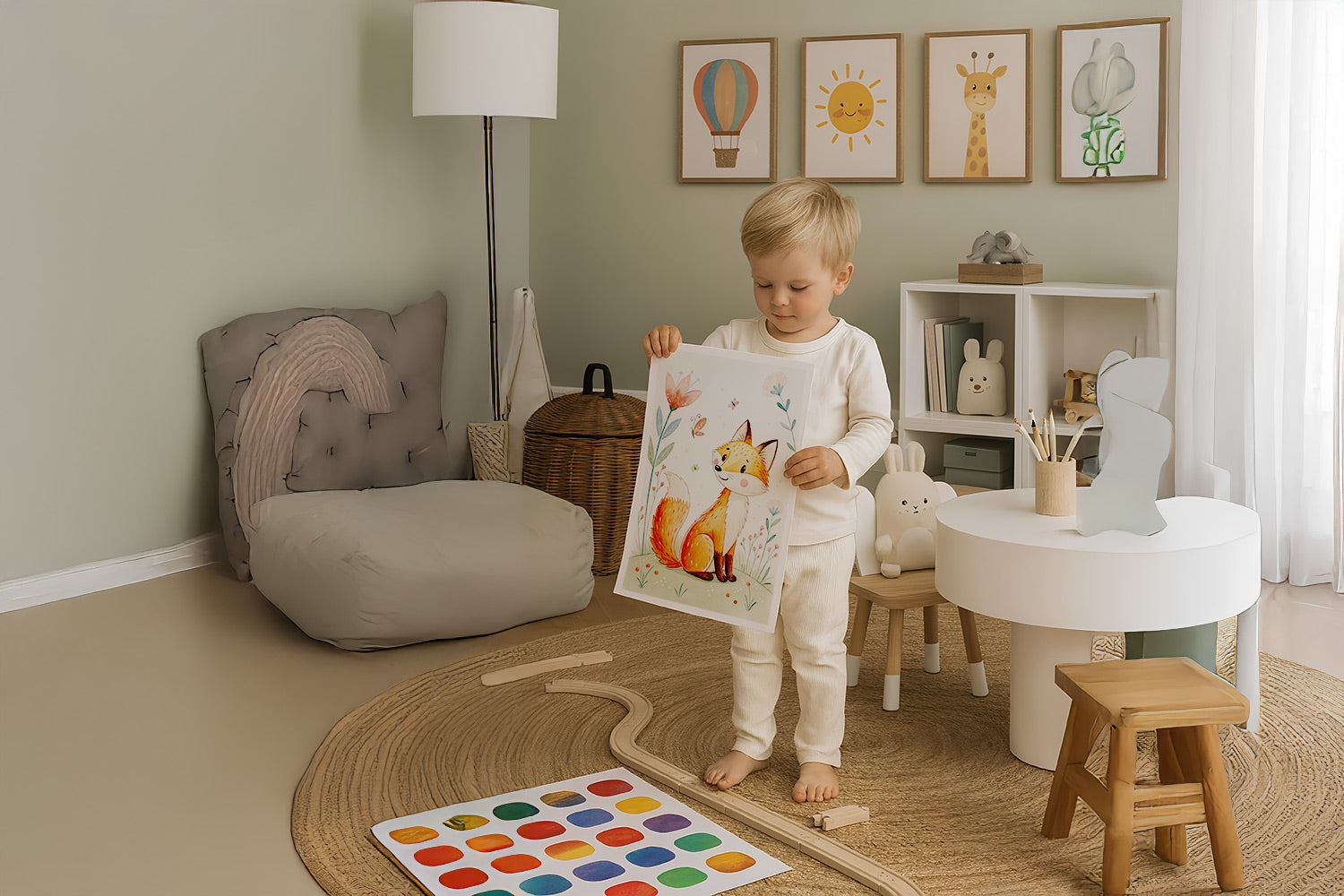Louis Janmot: self-portrait (1832)
Some artists capture what’s right in front of them. Others paint from the heart. Then there’s Louis Janmot, who brought to canvas the whispers of his soul during quiet, reflective nights. This 19th-century French painter crafted works that drift between the tangible world and the realm of dreams, leaving viewers pondering where reality ends and the spiritual begins.
Born in Lyon in 1814, Janmot grew into one of France’s most captivating creatives. His paintings don’t just hang on walls — they seem to breathe with a mysterious life of their own. While many of his peers focused on landscapes or portraits, Janmot took a different tack. He painted emotions, thoughts, and the unseen ties that bind human souls.
Louis Janmot: The Poem of the Soul (1835–1881)
The Poem of the Soul: where art and poetry entwine
Janmot’s magnum opus, Le Poème de l’âme (The Poem of the Soul), is one of art history’s most ambitious undertakings. This series of 18 paintings charts a soul’s voyage through life, death, and beyond. Each canvas unveils a new chapter in this cosmic tale.
The story begins with childhood innocence and follows two souls — a man and a woman — as they journey through earthly life, confront moral trials, and ultimately transcend physical bounds. Imagine it as a 19th-century graphic novel, painted with the finesse of a master and the insight of a mystic.
What sets these paintings apart isn’t just their technical brilliance. Janmot visualised abstract ideas like love, faith, and redemption. His figures seem to glow from within, surrounded by ethereal landscapes that hint at rather than pinpoint exact locations. He spent over twenty years bringing this series to life, infusing it with his philosophical beliefs and spiritual experiences.
A style that broke the mould
While many artists of his day embraced realism or impressionism, Janmot forged his own visual language. His style blends classical techniques with romantic feeling and symbolist themes. The outcome? Paintings that feel timeless yet otherworldly.
His palette leans towards gentle blues, golden yellows, and warm earth tones. These choices were deliberate. Janmot believed certain colours could evoke specific spiritual states: blue stood for divine love, gold for enlightenment, and earth tones grounded his celestial visions in human experience.
Figures in Janmot’s work often seem suspended between worlds. Their expressions convey deep thought or mystical insight. Unlike the sharp, defined shapes popular in his era, his characters have soft edges, as if emerging from morning mist.
Faith and artistic brilliance intertwined
To truly get Janmot, you need to understand his faith. He wasn’t just a Catholic artist painting religious scenes; his entire artistic philosophy sprang from his spiritual beliefs. He saw art as a form of prayer, a way to share divine truths with earthly viewers.
This outlook made him a bit of an outsider in art circles. While Parisian critics debated technique and style, Janmot focused on the soul-stirring power of his images. He believed art should lift people up, helping them connect with higher spiritual realities.
His religious paintings steer clear of dramatic martyrdom scenes common in Catholic art. Instead, they focus on quiet moments of revelation, gentle angelic guidance, and the peaceful passage between life and death. Even those without religious leanings often find solace and hope in his work.
Louis Janmot: The Poem of the Soul – 18 paintings montage
Beyond The Poem of the Soul
Though The Poem of the Soul is central to Janmot’s legacy, he created many other notable works. His portraits carry the same mystical aura as his allegories. Subjects appear caught in moments of deep reflection, their eyes revealing layers of thought and feeling.
Janmot also painted landscapes, but these weren’t your typical rural scenes. His natural backdrops serve as stages for spiritual drama. Trees symbolise growth and endurance, rivers the flow of time, and mountains the eternal, unchanging nature of divine love.
One standout piece, The Flight into Egypt, depicts the Holy Family’s journey as a dreamlike procession through a landscape that feels imagined rather than observed. This painting showcases Janmot’s gift for transforming familiar biblical tales into deeply personal meditations.
A Lyon artist’s enduring influence
Janmot stayed connected to his hometown throughout his life. Lyon’s spiritual and intellectual vibe shaped him as an artist-philosopher. The city’s rich Catholic heritage nurtured his mystical leanings, while its textile industry exposed him to decorative arts and patterns.
Today, Lyon’s Museum of Fine Arts houses the complete Poem of the Soul series. Visitors often spend hours moving from one painting to the next, following the narrative thread that links these visual chapters. The museum setting lets viewers experience the series as Janmot intended — a continuous journey rather than separate artworks.
Discovering Janmot’s art today
Modern viewers encountering Janmot often feel an instant connection to his vision. In our fast-paced digital world, his contemplative paintings offer a welcome breather. They invite slow, thoughtful looking — a kind of engagement that’s becoming rare these days.
Art collectors and interior designers increasingly prize Janmot’s unique style. His works suit spaces designed for reflection: libraries, bedrooms, or meditation nooks. The soft hues and spiritual themes create atmospheres ripe for peace and introspection.
For those keen to explore Janmot’s work, quality prints bring his art into Kiwi homes. Posterscape offers carefully selected reproductions of Janmot’s most important pieces, letting art lovers enjoy his vision without hopping on a plane to Europe.
The artist’s technique and materials
Janmot mainly worked with oil paints, layering transparent glazes to achieve his signature luminous effect. This technique, inspired by Renaissance masters, gave his paintings their glowing, ethereal quality.
He often started with detailed sketches, meticulously planning compositions before touching brush to canvas. This careful method suited his philosophical themes — every element in his paintings carries symbolic weight. Nothing is accidental in a Janmot piece.
He also experimented with lithography and pastel. These smaller-scale works reveal his talent for capturing subtle emotions. His lithographs of The Poem of the Soul helped spread the series’ fame beyond Lyon.
Influence on later artists
Though Janmot never founded a formal art movement, his influence ripples through generations of symbolist and spiritually minded artists. His blend of literary and visual elements inspired creatives aiming to move beyond mere representation toward deeper meaning.
Symbolists like Gustave Moreau and Odilon Redon shared Janmot’s fascination with depicting the invisible worlds of dreams, myths, and spiritual experience. While their styles varied, they inherited his belief that art should speak to the soul as well as the eye.
Contemporary artists still draw inspiration from Janmot’s approach. His readiness to paint abstract ideas like love, faith, and redemption resonates with modern creators exploring spiritual themes in secular settings.
Why Janmot matters now
In an age of rapid tech change and growing materialism, Janmot’s spiritual focus offers something many crave: a connection to transcendent values. His paintings remind us that human life is about more than what can be measured or counted.
His fusion of poetry and painting also speaks to today’s interest in multimedia and interdisciplinary art. Long before such trends, Janmot showed how visual and literary arts can enrich each other.
His work encourages us to slow down, reflect, and ponder life’s deeper meanings. In a world flooded with quick images and instant messages, Janmot’s meditative paintings offer a rare, thoughtful visual experience.
Musée d’Orsay – Louis Janmot exhibition, photo by Thibaut Voisin
Recent recognition at the Musée d’Orsay
Janmot’s significance gained major international attention when Paris’s Musée d’Orsay hosted a comprehensive exhibition dedicated to The Poem of the Soul. This landmark show reunited both cycles of the series for the first time in decades, allowing visitors to experience the full narrative journey Janmot envisioned. The museum’s innovative presentation combined visual and textual elements, letting visitors listen to Janmot’s 2,814-verse poem while viewing the paintings.
This approach honoured Janmot’s original vision of his work as a hybrid literary and pictorial creation. The exhibition placed him within the wider context of 19th-century art movements, drawing links to William Blake, the Pre-Raphaelites, and later symbolists like Odilon Redon. A collaboration between the Musée d’Orsay and Lyon’s Museum of Fine Arts made this extraordinary experience possible, bringing Janmot’s mystical vision to a broader global audience and securing his place in art history.
Collecting and displaying Janmot’s work
Original Janmot paintings rarely come up for sale, so quality prints are the main way most people engage with his art. When choosing reproductions, look for those that capture his subtle colour harmonies and glowing effects.
His paintings suit environments that support quiet contemplation. Avoid placing them in busy areas or alongside artworks with competing visual messages. Janmot’s art rewards calm, focused appreciation rather than fleeting glances.
Lighting is key when displaying Janmot prints. His works seem to emit their own inner light, an effect enhanced by gentle illumination. Steer clear of harsh spotlights that might flatten the delicate tonal nuances he carefully crafted.
For more about Louis Janmot’s life and art, the Wikipedia page offers a thorough overview. Museum websites also provide valuable insights for those keen to delve deeper into this remarkable artist’s vision.
Louis Janmot created art that transcends its era, speaking directly to universal human experiences of love, loss, hope, and transcendence. His paintings continue to offer glimpses of beauty and meaning as relevant today as they were in 19th-century Lyon.
Login
Country
- All Posters
- Bestsellers
- Poster Trends 2025
Art Movements & Styles
Seasonal & Special Occasions
- Poster packs
- Posterscape gift card
- Nursery animals wall art
- Dune
- On the beach
- Pompei
- Garden of Delights
- Alphabet letters
- Gradient posters
- Love
- Minecraft
- René Magritte, The Treachery of Images
- Intimate Abstractions
- Ghost in the Seychelles
- Hiroshige
- Mucha
- Nature's child
- Unicorns
- Dramatic Nature
- Brutalism
- Black Animals
- Intimate abstractions
- -> All capsules


Leave a comment
This site is protected by hCaptcha and the hCaptcha Privacy Policy and Terms of Service apply.